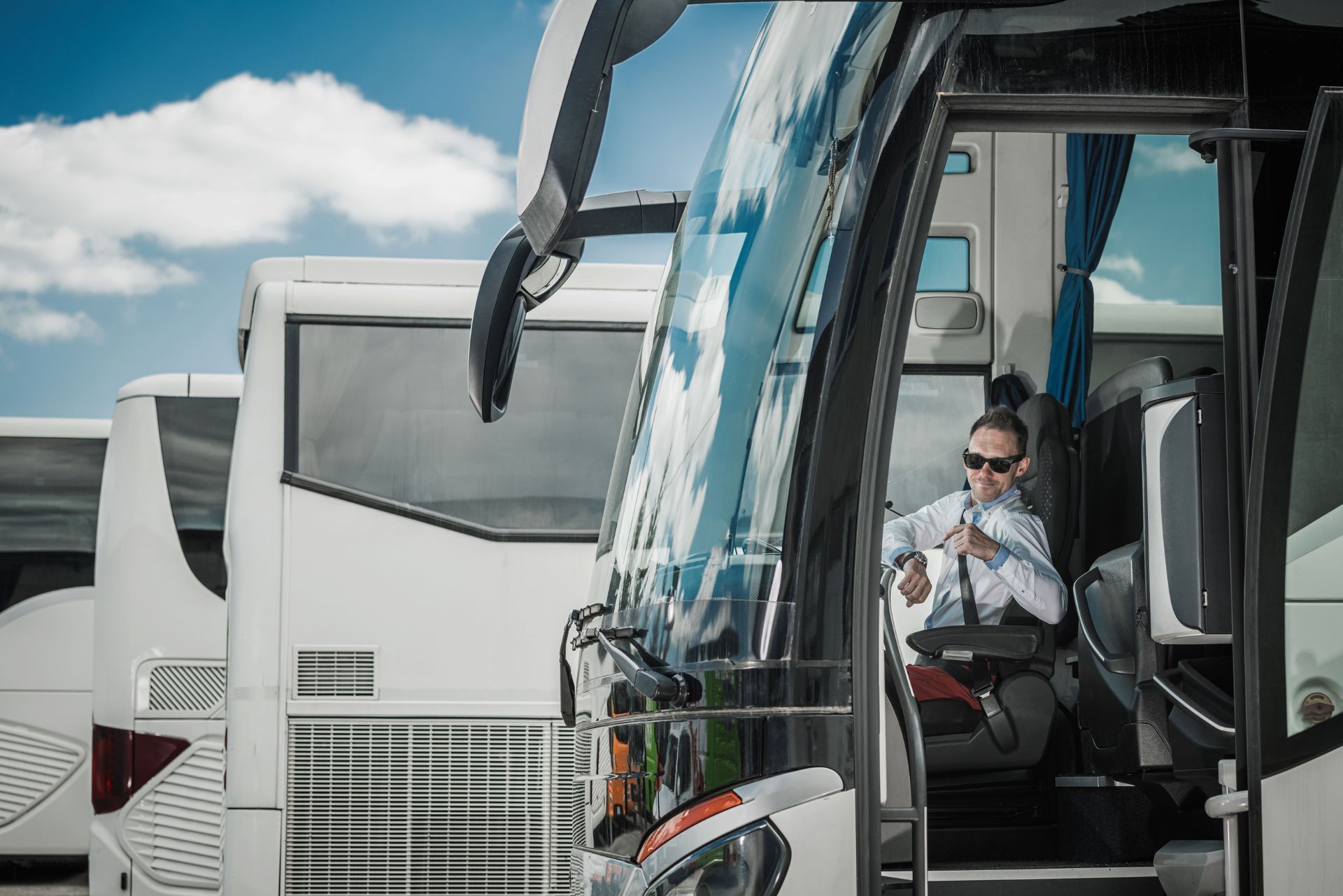Top 3 Recommended Policies

Transportation insurance plays a crucial role in safeguarding goods, vehicles, and liabilities across the vast and complex logistics landscape. As global trade continues to expand and evolve, the insurance industry adapts to new risks and technologies, ensuring businesses remain protected against unforeseen events. In 2024, the global logistics insurance market was valued at an impressive $71.8 billion and is projected to grow steadily to $84 billion by 2030, reflecting the sector's increasing importance in international commerce and transportation safety. This article explores the essentials of transportation insurance, recent developments, and emerging trends shaping the industry today.
Understanding Transportation Insurance
Transportation insurance encompasses various policies designed to cover risks related to the movement of goods and vehicles. It typically includes coverage for cargo loss or damage, commercial auto liability, and other liabilities arising from transportation operations. For businesses involved in shipping, trucking, or freight forwarding, having the right insurance is vital to mitigate financial losses caused by accidents, theft, natural disasters, or legal claims.
One key segment is commercial auto liability insurance, which protects trucking fleets and transportation companies against claims resulting from accidents involving their vehicles. Given the rise in social inflation and nuclear verdicts—large jury awards in liability cases—premiums in this area have increased significantly. According to the 2025 Transportation State of the Market Report, commercial auto premiums rose by 9.4%, driven by these factors as well as rising reinsurance costs. This trend underscores the growing challenges carriers face in managing risk and costs.
Moreover, the complexities of the transportation industry are further compounded by the increasing reliance on technology and data analytics. Companies are now utilizing advanced telematics systems to monitor vehicle performance and driver behavior in real-time, which not only helps in reducing accidents but can also lead to lower insurance premiums. Insurers are beginning to offer discounts for businesses that adopt these technologies, recognizing that proactive risk management can significantly reduce the likelihood of claims. As a result, the integration of technology in transportation operations is becoming a crucial factor in both operational efficiency and insurance costs.
For those interested in the latest market insights, the
Amwins report offers a comprehensive overview of how tariffs, fraud, and legislative reforms are reshaping the transportation insurance landscape. Additionally, the report highlights how the evolving regulatory environment can impact coverage options and pricing, making it essential for businesses to stay informed and adapt their insurance strategies accordingly. Understanding these dynamics is critical for ensuring adequate protection and maintaining a competitive edge in the marketplace.

Types of Transportation Insurance Coverage
Cargo Insurance
Cargo insurance protects goods against physical loss or damage during transit. This coverage is essential for businesses shipping valuable or sensitive products, whether by land, sea, or air. With the rise of digital trade documents, such as electronic bills of lading—which accounted for over 35% of global trade volume in 2024—insurers are increasingly offering blockchain-based insurance products. These innovations help streamline claims processing and enhance transparency, covering vast volumes of cargo worldwide.
For example, blockchain technology is being adopted by industry leaders like Maersk and IBM to improve marine cargo insurance claims processing. Their partnership, announced in September 2024, aims to enhance efficiency and transparency, reducing disputes and accelerating settlements. This development marks a significant step forward in leveraging technology to address longstanding challenges in cargo insurance.
More details on this initiative can be found in the Datahorizon Research report. Additionally, cargo insurance can also cover a wide range of risks, including theft, natural disasters, and even accidents during loading and unloading. Businesses that frequently ship high-value items, such as electronics or pharmaceuticals, often find that investing in comprehensive cargo insurance not only safeguards their assets but also enhances their credibility with clients, who may require proof of coverage as part of their contractual agreements.
Commercial Auto Liability Insurance
Commercial auto liability insurance covers bodily injury and property damage caused by vehicles owned or operated by a business. This type of insurance is especially critical for trucking companies, delivery services, and other transportation providers. As noted earlier, rising premiums reflect the increased risk landscape, influenced by factors such as social inflation and costly legal verdicts.
Industry partnerships are also shaping this space. For instance, Cimarron Insurance Company recently collaborated with Transportation Insurance Experts to launch an exclusive commercial auto liability insurance program tailored for agents and trucking fleets. This program aims to provide specialized coverage options that address the unique needs of transportation businesses, offering both protection and competitive pricing.
Insights into this collaboration are available through Paul Halter, CEO at Cimarron Insurance Company. Furthermore, the increasing complexity of transportation logistics has led to a growing demand for tailored coverage options that can adapt to the specific operational challenges faced by businesses. This includes considerations for new technologies, such as autonomous vehicles and telematics, which can provide real-time data to insurers, potentially leading to more personalized premiums and coverage terms based on actual driving behavior and risk exposure.
Parametric Insurance for Aviation Cargo
Parametric insurance is an innovative product gaining traction in the transportation sector, especially for aviation cargo. Unlike traditional insurance, parametric policies trigger payouts based on predefined parameters or thresholds, such as flight delays or weather conditions, rather than loss assessments. This approach allows for rapid claims settlements, providing timely financial relief to insured parties.
In August 2025, AXA XL introduced a parametric insurance product specifically designed for aviation cargo. This product offers payouts based on flight delay thresholds, helping businesses manage risks associated with air freight disruptions more effectively. Such innovations reflect the industry's move toward more flexible and technology-driven insurance solutions.
Further information about this product launch is detailed in the Datahorizon Research coverage. The growing adoption of parametric insurance in aviation is also indicative of a broader trend towards risk management solutions that prioritize speed and efficiency. As global supply chains become increasingly interconnected, businesses are recognizing the need for insurance products that can quickly respond to unexpected events, ensuring that they can maintain operational continuity and minimize financial losses. This shift not only benefits individual companies but also enhances the resilience of the entire transportation sector in the face of unpredictable challenges.
Emerging Technologies and Their Impact on Transportation Insurance
The transportation insurance sector is undergoing a technological transformation, driven by advancements in data analytics, blockchain, and driver assistance systems. These technologies not only improve risk assessment but also enhance claims processing and fraud detection.
Advanced Driver Assistance Systems (ADAS) and Risk Prediction
One of the most promising developments is the use of Advanced Driver Assistance Systems (ADAS) data to predict near-miss events and assess driver risk more accurately. A study published in August 2025 introduced a zero-inflated Poisson framework that leverages ADAS data to forecast potential incidents, enabling insurers and fleet operators to implement proactive safety measures.
This predictive capability improves underwriting accuracy and helps reduce accident rates by encouraging safer driving behaviors. It also supports customized insurance pricing based on real-time risk profiles, benefiting both insurers and insured parties.
Furthermore, the integration of ADAS data with telematics allows for a more comprehensive view of driver behavior, including factors such as speed, braking patterns, and even environmental conditions. Insurers can use this wealth of information to not only tailor policies but also provide feedback to drivers, fostering a culture of safety and responsibility on the roads. For a deeper dive into this study, visit the arXiv publication.
Blockchain and Digital Trade Documents
Blockchain technology is revolutionizing how transportation insurance handles documentation and claims. The widespread adoption of electronic bills of lading and other digital trade documents—accounting for over a third of global trade volume—has prompted insurers to develop blockchain-based products that ensure data integrity and transparency.
This shift reduces paperwork, minimizes fraud risks, and accelerates claims verification processes. By securely recording transaction histories and cargo details on decentralized ledgers, blockchain solutions foster trust among stakeholders and streamline insurance operations. Additionally, the immutable nature of blockchain records means that all parties can access the same information in real-time, significantly reducing disputes and enhancing collaboration across the supply chain.
As more companies embrace this technology, we may witness a shift in traditional insurance models, where smart contracts automatically execute claims based on predefined conditions, further enhancing efficiency and customer satisfaction.
Cybersecurity Challenges in Transportation
As transportation systems become increasingly digitalized, they face growing cyber vulnerabilities. A study published in January 2025 highlighted the rising risks of cyberattacks targeting transportation infrastructure and proposed collaborative strategies to enhance cybersecurity resilience.
Transportation insurers are now factoring cyber risk into their policies, offering coverage that addresses data breaches, ransomware attacks, and operational disruptions caused by cyber incidents. This evolving risk landscape demands continuous innovation and cooperation between insurers, technology providers, and transportation companies. Moreover, as the Internet of Things (IoT) continues to expand within the transportation sector, with connected vehicles and smart infrastructure, the potential attack surface for cyber threats increases exponentially.
To combat these challenges, insurers are investing in advanced cybersecurity measures and training programs for their clients, ensuring that all stakeholders are equipped to handle potential threats. This proactive approach not only protects assets but also builds a more resilient transportation ecosystem. More on this topic can be explored in the
arXiv cybersecurity study.
Challenges and Future Outlook
The transportation insurance industry faces several challenges, including rising claims costs, regulatory changes, and evolving risk profiles. Social inflation and nuclear verdicts have driven premium increases, while the integration of new technologies requires insurers to adapt underwriting models and claims processes. Additionally, the increasing frequency of natural disasters and climate-related incidents adds another layer of complexity, as insurers must assess and price risks that were previously considered rare or manageable. This unpredictability not only affects the financial stability of insurance providers but also places a burden on businesses that rely on predictable insurance costs to operate effectively.
Nevertheless, the sector is poised for growth and innovation. The projected compound annual growth rate (CAGR) of 2.7% through 2030 reflects ongoing demand for comprehensive coverage amid expanding global trade. Emerging products like parametric insurance and blockchain-enabled policies are setting new standards for efficiency and customer experience. For instance, parametric insurance offers a streamlined claims process by providing automatic payouts based on predefined triggers, such as weather events, thus reducing the time and resources typically spent on claims investigations. Furthermore, blockchain technology enhances transparency and security in transactions, allowing for more reliable and tamper-proof records of insurance agreements and claims, which can significantly reduce fraud and disputes.
Collaboration between insurers, technology firms, and transportation stakeholders will be essential to navigate these challenges and leverage opportunities. By embracing data-driven risk management and fostering transparency, the transportation insurance market can continue to support the vital flow of goods worldwide. Moreover, as the industry evolves, there is a growing emphasis on sustainability and corporate social responsibility. Insurers are increasingly looking to offer incentives for businesses that implement eco-friendly practices or invest in technologies that reduce their carbon footprint. This shift not only aligns with global sustainability goals but also attracts a new generation of environmentally conscious consumers who prioritize responsible business practices in their purchasing decisions.

Conclusion
Transportation insurance is a dynamic and essential component of global logistics, providing protection against a wide range of risks associated with moving goods and vehicles. From traditional cargo and liability coverage to cutting-edge parametric products and blockchain applications, the industry is evolving to meet modern demands.
Understanding the types of coverage available, the impact of emerging technologies, and the challenges faced by insurers helps businesses make informed decisions about their risk management strategies. As the market grows and adapts, staying informed about trends and innovations will be key to securing effective and efficient insurance solutions.
For those seeking to explore the market further, the
Research and Markets report offers valuable insights into the logistics insurance market’s strategic outlook and future forecasts.
Contact Us
Phone
Location
